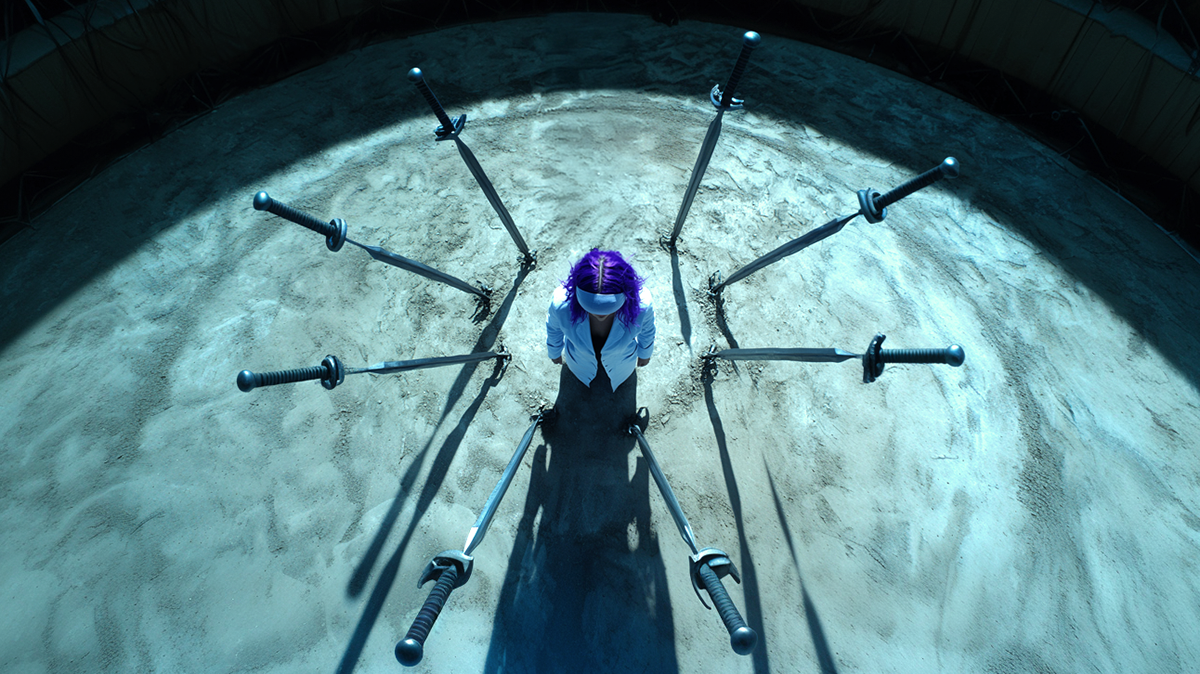Stepping Cognitive Bias Back to Move Gender Theory Forward
When our theories of the Universe limit our observations of its diversity

Not long ago, I discussed magic and its relationship to a fully realized identity.
Several colleagues of mine questioned my topic: why am I - a scientist - writing about magic, which has no basis in science or reality? To be clear, I believe in the power and reality of magic, even as my life's work has been to further the cause of science.
The fundamental action of science is to observe our Universe - to make what is unknown or misunderstood (what we might call magic) that which is clear and predictable (what we now call science). Doing science means attempting to explain the unknown, not discounting what we have yet to explain.
I can't explain magic - not yet, anyway. But is that proof magic is fake? Or is my view of the problem too narrow, my measurements too coarse?
Humans - even scientists - tend to rely on prior knowledge as opposed to observing data objectively. We choose to force new data into existing theories instead of challenging our theories when data appears not to fit.
No better example of Western society's cognitive bias exists than to observe the supposed "debate" about sex and gender.
Truly, there is little debate about the meanings of these words. Both belong to science, yet politicians attempt to redefine them. My work takes a holistic view of the human experience, including those aspects we have yet to explain.
In this regard, at least, I stand in agreement with Gerard 't Hooft, Nobel Laureate and recent recipient of the Special Breakthrough Prize in Fundamental Physics.
Theoretical physics and the human experience
To be clear, I am not a theoretical physicist. I don't typically fangirl over theoretical physicists. Yet I find a profound insight about the nature of science as a practice in Gerard 't Hooft's harsh words regarding his field.
When asked why theoretical physics had not experienced a major breakthrough for decades, 't Hooft directed his criticism toward current theories. Quantum mechanics, he exclaimed, leads to nonsensical conclusions about reality. If our theories are nonsensical, we certainly should not expect to advance our knowledge by applying them.
Instead, 't Hooft advised:
…we need to step backward first, and that’s always my message in science in general: before you understand something, just take a few steps back. Maybe you have to make a big march back, all the way back to the beginning.
We must be willing to let go of science that doesn't serve scientists. When our theories fail to explain all phenomena we observe in the Universe, we must question the theory, not the Universe. Scientists are in service to the Universe, not the other way around.
These are difficult words from one of the most celebrated theoretical physicists alive today. What is it 't Hooft criticized about current theories?
Schrödinger's Cat Reloaded
General understanding of quantum mechanics has it describe the Universe as a problem in statistics. We cannot know the state of a system unless and until we observe it. Before that, the system exists as a superposition of probability states.
That sounds pretty complicated, and fortunately, Erwin Schrödinger - a pioneer in the field of quantum mechanics - devised a thought experiment to question this interpretation. Schrödinger considered placing a cat in a sealed box with a vial of poison. The poison could be activated by radioactive decay, granting the system a non-zero probability of killing the cat.
(In case it wasn't clear, Schrödinger was famous for hating cats, unlike the author. NB: no cats were harmed in the writing of this article.)
Until the box is opened to observe the cat, quantum mechanics places the cat in an indeterminate state - neither alive nor dead. The cat exists as a superposition of probability states that include both surviving (Yay - take that, Schrödinger!) and perishing (Boo…fie on you, Schrödinger!).
Quoting this thought experiment, 't Hooft concludes quantum mechanics as a theory is to blame. The cat exists, and the cat exists in one state, not a superposition of states, regardless of whether we observe it or not.
To move forward from this nonsensical representation of unashamed felinity, 't Hooft recommends we question the theory that fostered the thought experiment in the first place.
But I mentioned gender - how does quantum mechanics play into gender theory?
Superposition of gender states
Existing gender theory struggles to describe sex or gender as definable and knowable states.
Judith Butler posited gender as an "act which has been rehearsed…but which requires individual actors in order to be actualized and reproduced as reality once again." Humans perform a superposition of social norms, contextual to time and place, with sex unknowable and meaningless.
Many biologists describe sex as a spectrum, with no delineations among the expressions of genetics, hormonal balance, and structure. Each of us exists as a superposition of the human genome, with biochemistry, environment, and fortune playing a role. Gender - while different - is similarly indefinable.
The Trump administration defined sex as "belonging, at conception, to the sex that produces" one of two gametes. A circular definition, sex is a superposition of all expressions of human sex characteristics, none of which has developed at conception. Adding insult to injury, gender is exactly sex, and exactly as nonsensical.
All of these theories describe sex as a statistics problem. All of them describe the human experience - your experience - as "it depends." And all of these theories leave humans in the lurch, providing no guidance to life or society.
Cats cannot exist as a superposition of states, and neither can humans. Moving forward in gender theory - as in theoretical physics - will require taking several steps back.
Just as every cat (and every human) exists in a determinate state, every human (and every cat) possesses a determinate sex and gender. The problem now is to allow ourselves to reject theories that can't describe them.
Collapsing the waveforms
Biology provides crisp and determinate definitions both for sex and gender. These definitions are easily derivable by observing the Universe. We observe sexual reproduction takes place via combination of gametes, and we observe production of gametes is specific to a single organism.
There are two definitions to glean: sex is defined by contribution of a particular gamete to one act of reproduction. Gender is defined by everything necessary to engage in that act of reproduction - including physical, cognitive, and behavioral.
It appears humans are incapable of changing the gamete each of us produces - assuming we produce one at all. But scientific definitions are not made to serve humans and our petty politics. Science studies the Universe. Any scientific definition must satisfy the observations we make, not the politics we wish to impose.
Western society has hamstrung itself with theories that cannot provide universal descriptions of sex or gender. But we are too afraid to question sacred cows of philosophy, biology, and politics.
I believe there is an important reason behind the consistent failure of science and scientists to stand up to nonsense in recent years, especially the nonsense in politics. I will explore that topic in detail in a future article. For now, we must heed Gerard 't Hooft's warning.
The limits that set us free
In order to move forward in gender theory, we must recognize the obvious. If a person clearly not representing science must define words to satisfy a political agenda, scientists must reclaim them.
We must question our theories. If our theories are too complicated to be useful, too narrow to cover every phenomenon, we must start over. There is no escape from poor theories, only further rationalization, hand-waving, and exceptions.
Gerard 't Hooft is willing to overturn more than a century of theoretical physics that allowed us to advance as far as we have. He realizes we are now limited by thought that initially set us free to explain certain phenomena. But that theory was incomplete.
We cannot sacrifice the future of science to save our egos today. We must accept the logical conclusions of our theories, and discard them as necessary.
If a Nobel Laureate is willing to toss out his life's work in order to understand it better, we gender theorists must be ready to follow his example.
Gender is not magic. I still can't explain magic. But perhaps in the future, somebody else will.
We can, however, step our theories back in order to move science forward.




